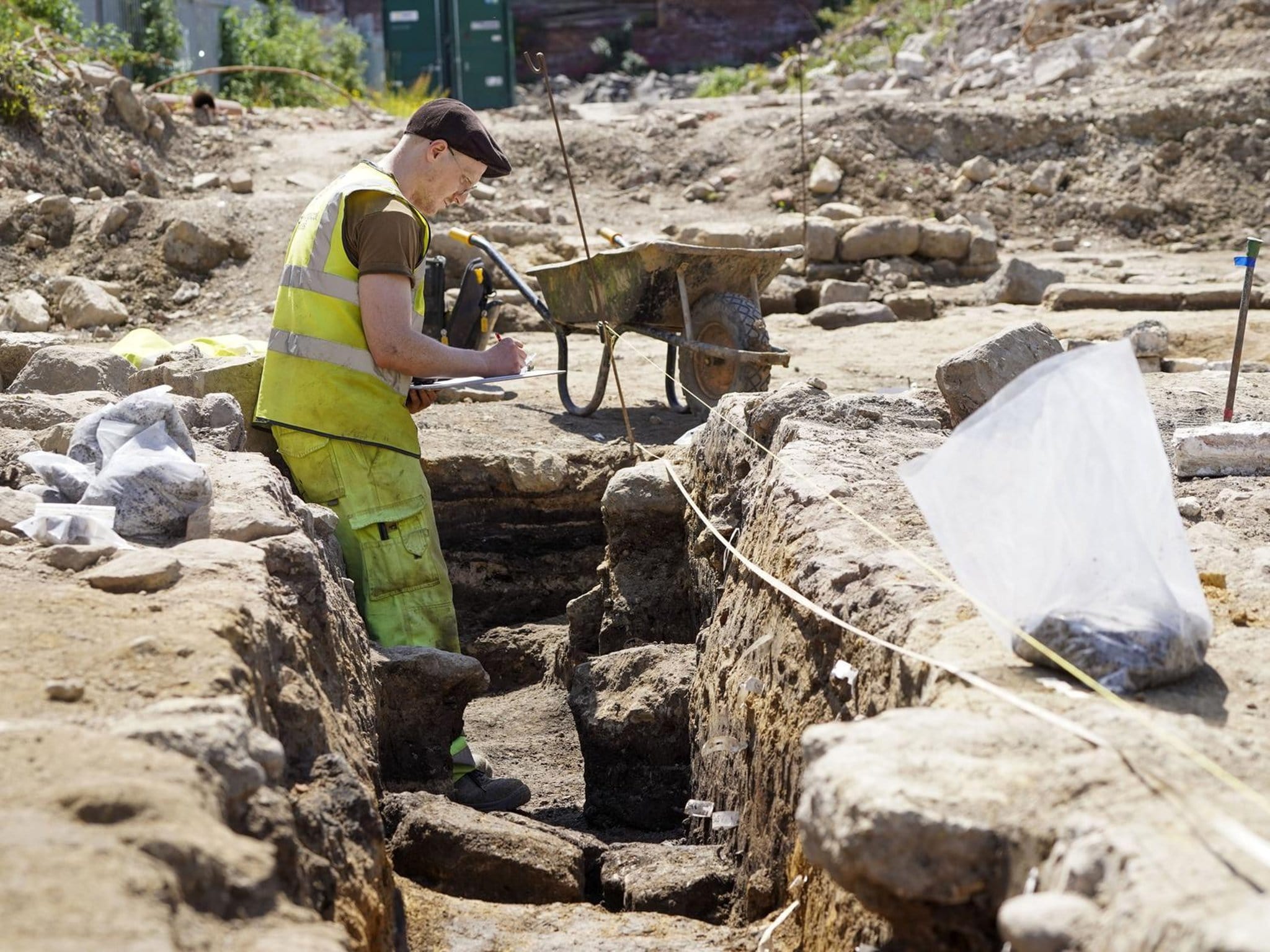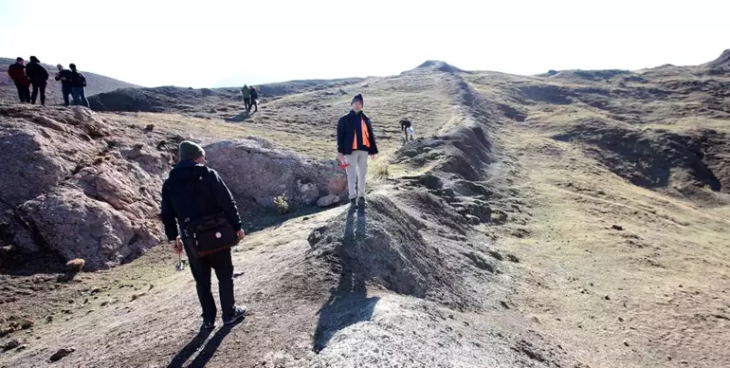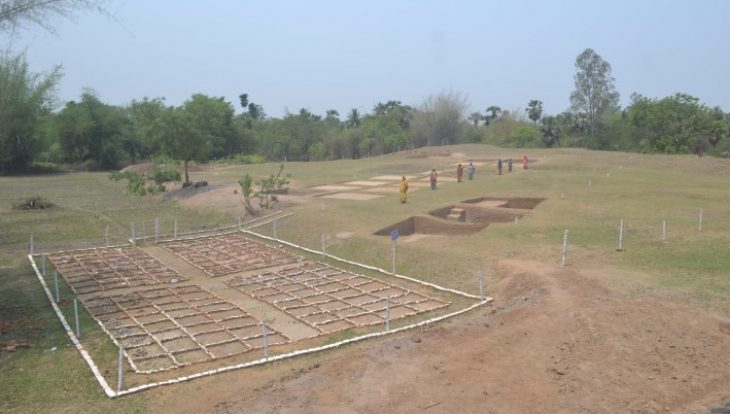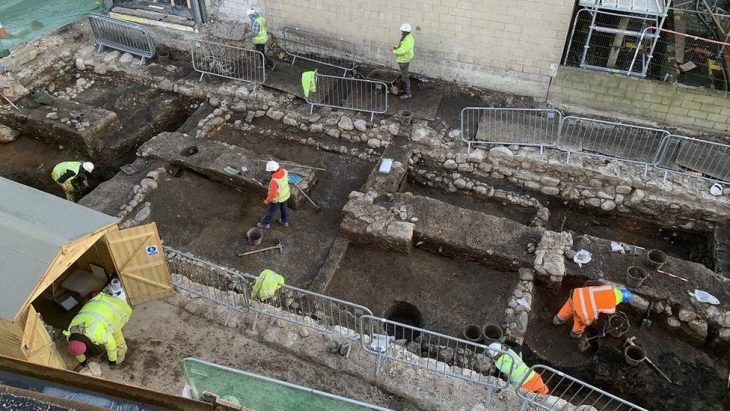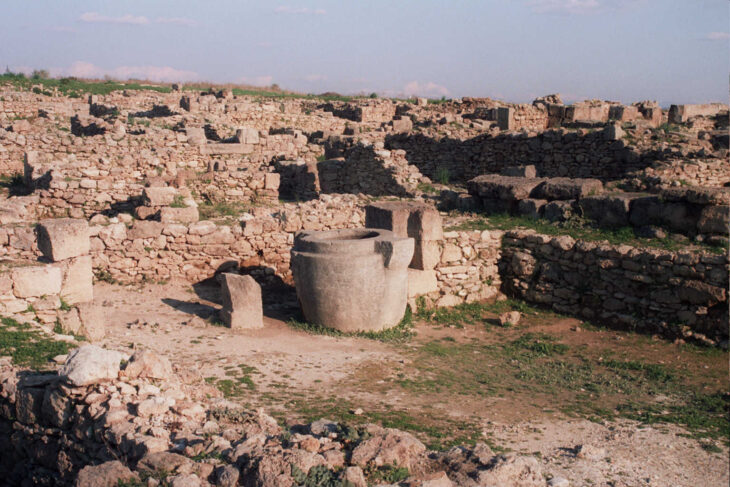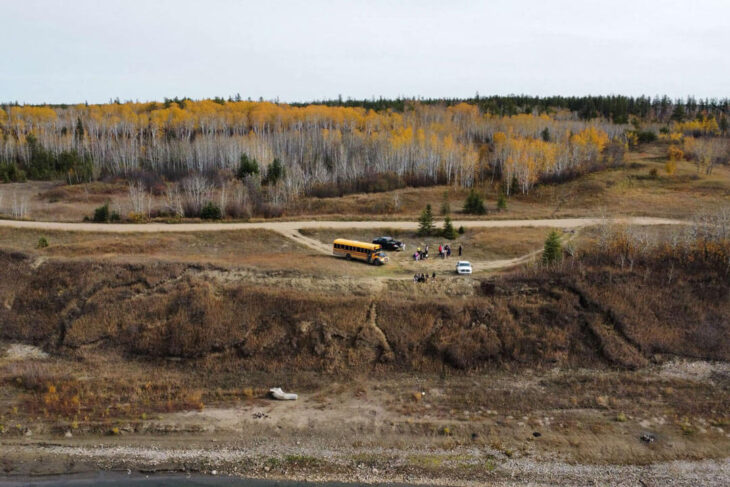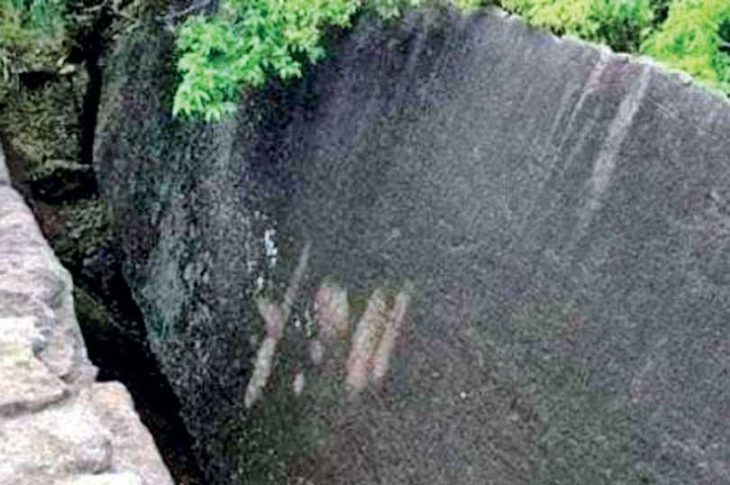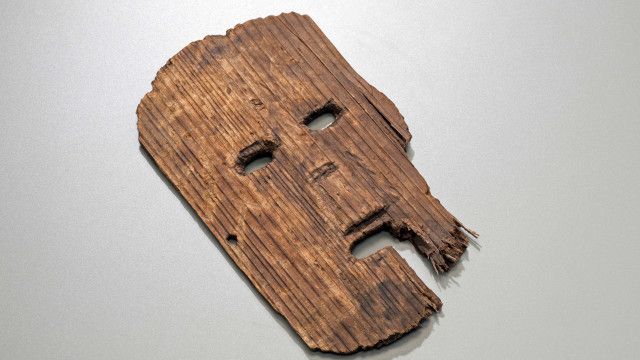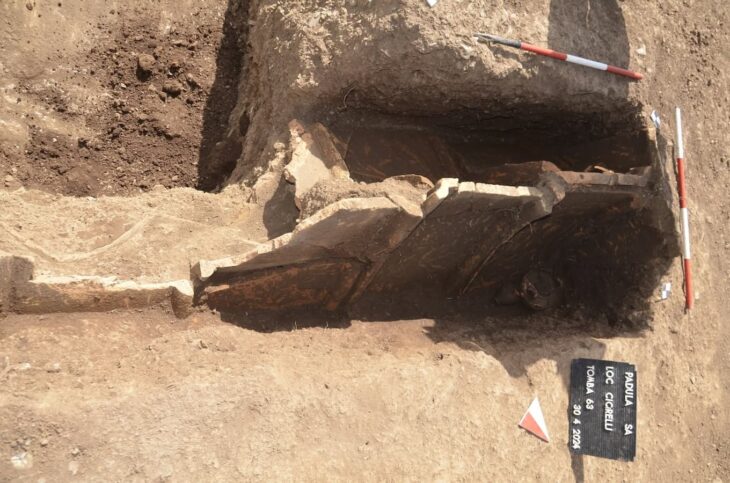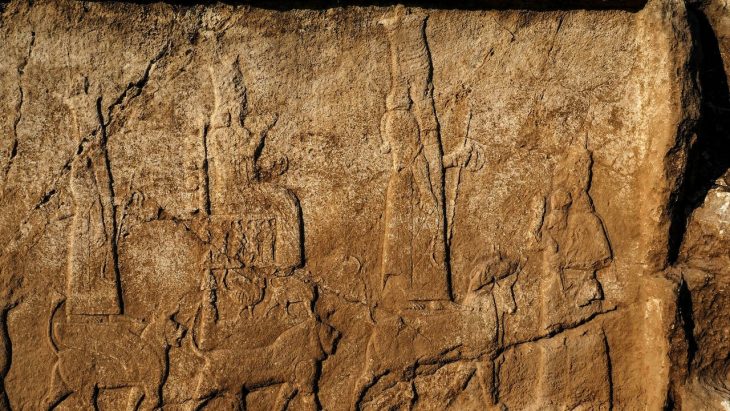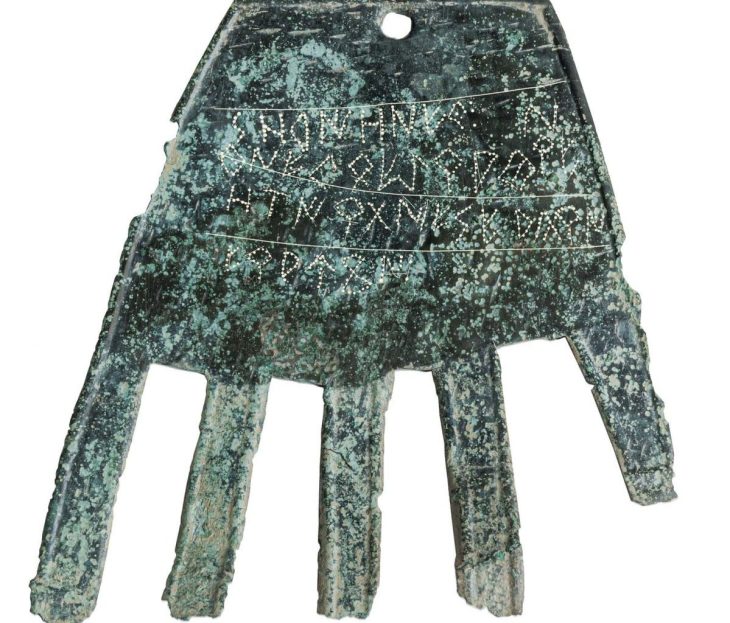Archaeologists working on the site of the former Carleton Furniture factory at Mill Dam Lane in Pontefract, West Yorkshire, England, have unearthed Neolithic remains.
Excavations on the 6.4-acre site, which is planned for up to 80 residential units, revealed that the site was on low-lying ground, most likely forming a pond or marsh that was built up with soil deposits from the 13th to the 15th centuries to make it liveable. A corn mill was known to have been located to the east of Mill Dam Lane.
A Neolithic arrowhead demonstrates that human activity in the area dates back to early prehistory.
“The site is located between the scheduled monuments of Pontefract Castle and St John’s Priory and was always expected to contain archaeological remains, albeit damaged by the construction of the furniture factory,” said Nansi Rosenberg, director and principal consultant for Prospect Archaeology, which was commissioned by developers Towngate Plc to carry out the dig.
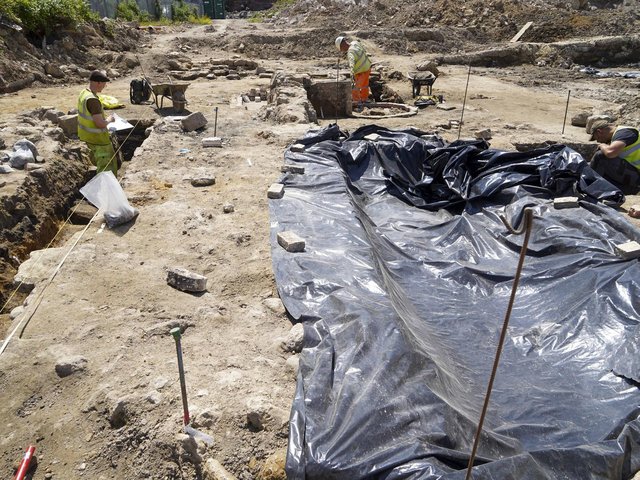
“Although planning permission has been granted for residential development, the area containing the remains of the medieval mill is excluded from the area for housing and will be preserved within an area of public open space.”
📣 Our WhatsApp channel is now LIVE! Stay up-to-date with the latest news and updates, just click here to follow us on WhatsApp and never miss a thing!!
The excavations have uncovered the remains of post-medieval and nineteenth-century properties, including a stone-lined cess pit containing a urinal or chamber pot, which was presumably dropped into the pit when it was taken to be emptied. A World War II air-raid shelter, later used for storage by the furniture factory, was also discovered at the northern end of the site.
Excavation work is anticipated to continue through June, after which the records, artifacts, and soil samples will be sent to an expert for evaluation.
This is the area’s second archeological site to be unearthed this year. A crew working in Kinsley discovered a rare kiln thought to date back to Roman times, among other things. It is the second kiln discovered in the area; the first kiln had been discovered during an earlier dig in January 2020.
Pontefract is rich in archeological history, other findings include more than 30 Roman skeletons, together with pottery, jewelry, and building remains on a construction site in 2017, and a 2,400-year-old chariot burial site at Ferrybridge while working on an A1 upgrade in 2005.
Source: Pontefract and Castleford Express
Cover Photo: Scott Merrylees

